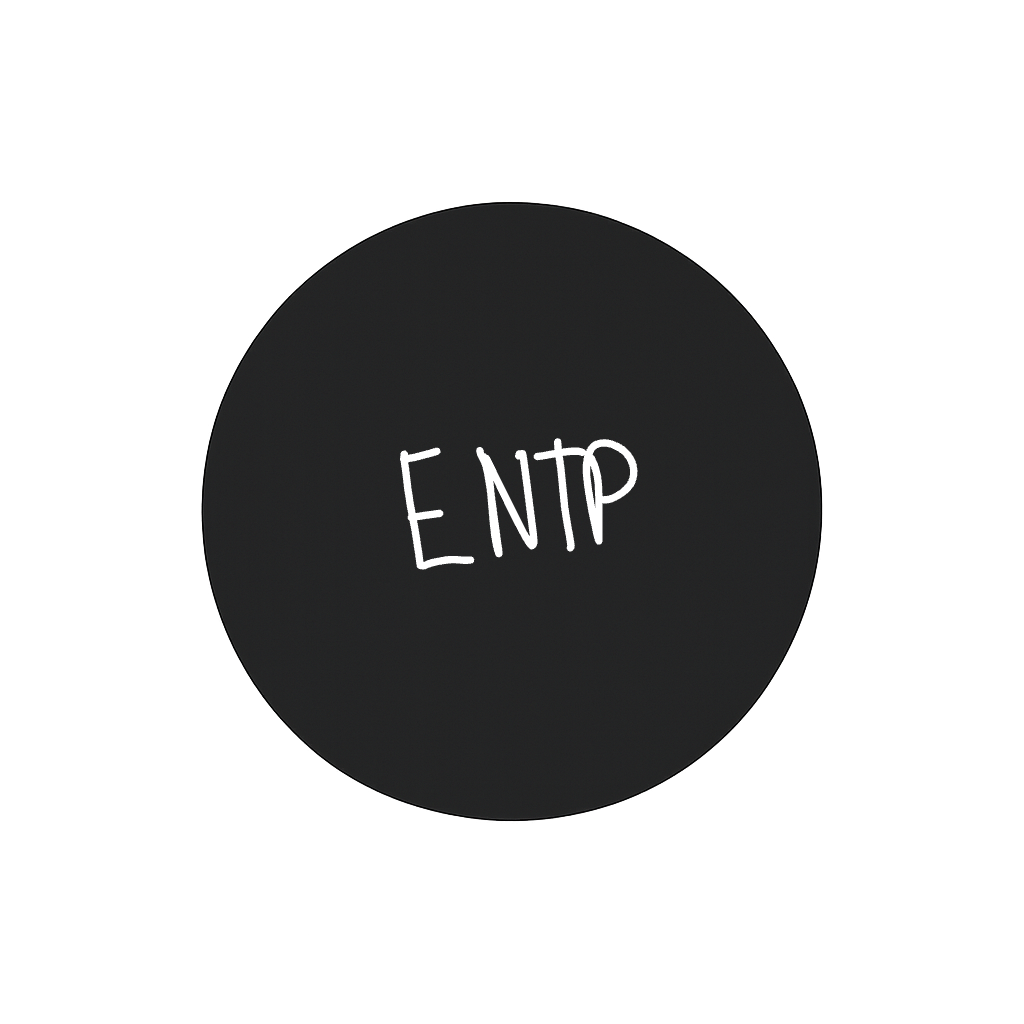The ENTP personality type, as defined by the Myers-Briggs Type Indicator (MBTI), is known for its innovative, curious, and adaptable nature. Understanding the interplay of its cognitive functions—Extraverted Intuition (Ne), Introverted Thinking (Ti), Extraverted Feeling (Fe), and Introverted Sensing (Si)—provides valuable insights into how ENTPs perceive the world, make decisions, and interact with others. Below is a comprehensive breakdown of these functions individually and in combination.
ENTP Cognitive Functions Overview
Dominant Function: Extraverted Intuition (Ne)
Role: Ne is the primary lens through which ENTPs understand the world. It enables them to see multiple possibilities, generate new ideas, and make connections between seemingly unrelated concepts.
Characteristics: Creative, exploratory, open-minded, future-focused, and quick to see potential opportunities.
Auxiliary Function: Introverted Thinking (Ti)
Role: Ti helps ENTPs analyze information logically, develop internal frameworks, and ensure their ideas are consistent and well-reasoned.
Characteristics: Analytical, precise, objective, systematic, and focused on internal consistency.
Tertiary Function: Extraverted Feeling (Fe)
Role: Fe allows ENTPs to connect with others on an emotional level, helping them navigate social dynamics and build rapport.
Characteristics: Charismatic, socially aware, empathetic, and adept at understanding the needs and emotions of others.
Inferior Function: Introverted Sensing (Si)
Role: Si relates to the past and personal experiences. For ENTPs, it is less developed but can help them draw from previous knowledge and maintain a sense of continuity.
Characteristics: Detail-oriented, reflective, cautious, and focused on past experiences.
Interactions Between Cognitive Functions
Understanding how these functions interact can illuminate the complexities of the ENTP personality. Here’s a detailed look at each pairing and combination:
Ne + Ti (Dominant + Auxiliary)
Synergy: This combination allows ENTPs to blend creativity with analytical rigor. Ne generates innovative ideas, while Ti refines these ideas and ensures they are logically sound.
Application: ENTPs often use Ne to explore various possibilities and employ Ti to evaluate and structure these possibilities, making them skilled at problem-solving and idea generation.
Ne + Fe (Dominant + Tertiary)
Balancing Exploration and Connection: Ne provides a wealth of ideas, while Fe helps ENTPs communicate these ideas in a way that resonates with others.
Application: ENTPs may use their creativity to engage others, using Fe to ensure their ideas are understood and appreciated, making them effective communicators and collaborators.
Ti + Si (Auxiliary + Inferior)
Analytical Reflection: Ti drives logical analysis, while Si helps ENTPs draw from past experiences to validate their reasoning.
Application: When refining their ideas, ENTPs can use Ti for critical analysis and Si to ensure their conclusions are grounded in personal experience or historical context.
Ne and Si (Dominant and Inferior)
Balancing Innovation with Stability: Ne’s focus on new possibilities can sometimes overshadow the need for stability and continuity emphasized by Si.
Challenge: ENTPs may struggle to stay grounded, leading them to overlook important details or become disconnected from past experiences.
Growth Opportunity: Developing Si can help ENTPs integrate their innovative ideas with practical experience, ensuring a more balanced approach to problem-solving.
Fe and Ti (Tertiary and Auxiliary)
Integrating Emotion and Logic: Fe emphasizes social harmony, while Ti ensures that decisions are logically sound.
Application: ENTPs can navigate complex social situations by balancing their logical approach with empathy, allowing them to communicate effectively and build strong relationships.
Practical Implications for ENTPs
Strengths
- Innovative Thinking: ENTPs excel at generating new ideas and seeing possibilities that others may overlook.
- Analytical Problem-Solving: Their strong Ti enables them to analyze information critically and develop well-reasoned solutions.
- Charismatic Communication: Fe helps ENTPs connect with others, making them engaging and persuasive communicators.
- Adaptability: Developing Si can enhance their ability to draw from past experiences and maintain consistency when needed.
Challenges
- Overemphasis on Ideas: Relying heavily on Ne may lead ENTPs to overlook important details or fail to follow through on their ideas.
- Difficulty with Routine: Si, being less developed, can make it challenging for ENTPs to engage with repetitive tasks or maintain consistency.
- Balancing Logic and Emotion: Ensuring that decisions are both logically sound and considerate of others’ feelings can sometimes be a delicate balance.
- Staying Grounded: Focusing on new possibilities may cause ENTPs to lose touch with practical realities or overlook the importance of past experiences.
Growth Strategies
- Enhancing Si: Engaging in activities that focus on past experiences, such as journaling or reflecting on lessons learned, can help strengthen Si.
- Developing Fe: Practicing empathy and actively considering others’ feelings can bolster Fe, aiding in more effective communication and relationship-building.
- Balancing Exploration with Practicality: Making a conscious effort to integrate new ideas with practical considerations can help ENTPs ensure their innovations are feasible and impactful.
- Managing Follow-Through: Developing habits and routines can help ENTPs follow through on their ideas and maintain consistency in their endeavors.
Conclusion
The ENTP’s cognitive functions—Ne, Ti, Fe, and Si—work in a dynamic interplay that defines their unique approach to life. By leveraging the strengths of each function and addressing their inherent challenges, ENTPs can achieve personal growth, enhance their effectiveness, and make meaningful contributions to their pursuits. Understanding these dynamics not only aids ENTPs in self-awareness but also helps others appreciate the creativity and adaptability of this insightful personality type.
***
